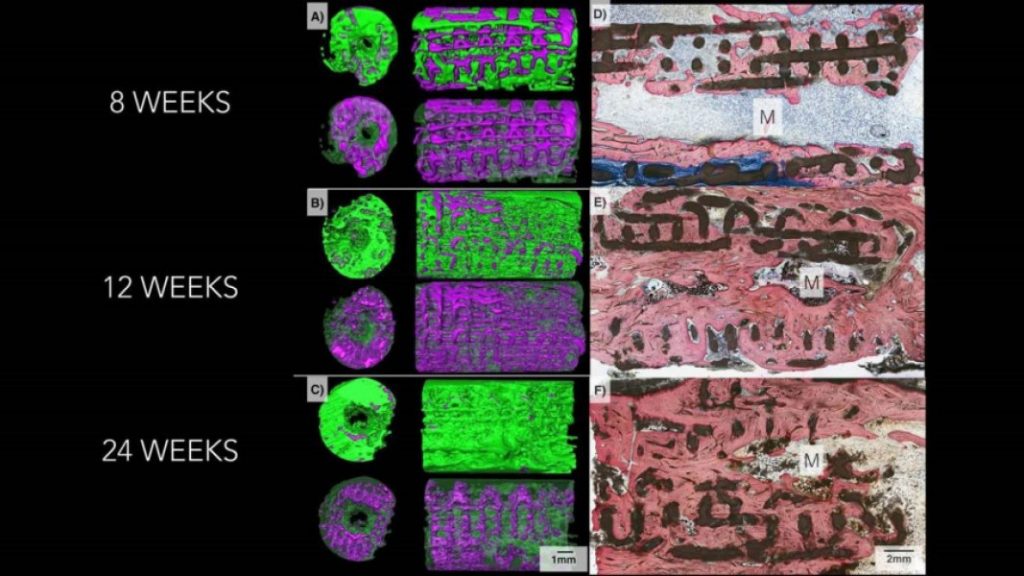Scientists and surgeons at NYU School of Medicine and NYU College of Dentistry, New York, have published a study detailing 3D printed implants that dissolve as a bone heals.
According to the study’s senior investigator Paulo Coelho, “Our 3D scaffold represents the best implant in development because of its ability to regenerate real bone,”
“Our latest study results move us closer to clinical trials and potential bone implants for children living with skull deformations since birth, as well as for veterans seeking to repair damaged limbs.”
Toward clinical testing
Before NYU’s 3D printed implants can be used to heal human bone they must, at present, be tested in a living animal model first.
In this research, the team demonstrate that the implants can be used to regenerate bone across small holes in the skulls of mice and missing pieces of rabbits limbs and jaws, up to 1.2 cm long.

3D printing bones
Bone implants in the NYU study are 3D printed to mimic the shape of a defective bone. For porosity, the artificial implants are designed as lattice structures (scaffolds), which also encourage new tissues to grown through them.
A gel containing suspended particles of tricalcium phosphate – a mineral common to natural bone – is used as the base material for the implants. This mineral makes the implants resorbable by the body.
A Carbon Black ink, which is washed away before implantation, is also used as support material, filling the circular center of the bone.

Minimizing side effects
After 3D printing, the calcified implants are coated in dipyridamole, a blood thinning medication that prevents clotting, and also attracts bone stem cells. In the study, dipyridamole coating sped up bone formation by more than 50% when compared to non-coated samples.
Bruce N. Cronstein, the study’s co-author, says “Dipyridamole has proven to be key to the implant’s success. And because the implant is gradually resorbed, the drug is released a little at a time and locally into the bone, not into the whole body, thereby minimizing risks of abnormal bone growth, bleeding, or other side effects.”
Next steps
The NYU team has a patent pending for the 3D printed scaffolds described in this study. The next step is to try the implants in larger animals, moving gradually toward future clinical trials.
Other materials currently undergoing research for their potential to improve the way bone implants are made include, silk PLA, nanodiamonds and 3D-Paint from Shah-lab spinoff Dimension Inx.
“Form and Functional Repair of Long Bone Using 3D Printed Bioactive Scaffolds” is published online in the Journal of Tissue Engineering and Regenerative Medicine. It is co-authored by Nick Tovar, Lukasz Witek, Pablo Atria, Michael Sobieraj, Michelle Bowers, Christopher Lopez, Bruce Cronstein, and Paulo G. Coelho.
To stay up to date with all the latest research sign up to the 3D Printing Industry newsletter, follow us on Twitter, and like us on Facebook. Seeking a career in engineering? Join 3D Printing Jobs now.
Featured image shows 3D imaging showing bone growing through a 3D printed implant over the course of 6 months. Image via Journal of Tissue Engineering and Regenerative Medicine



